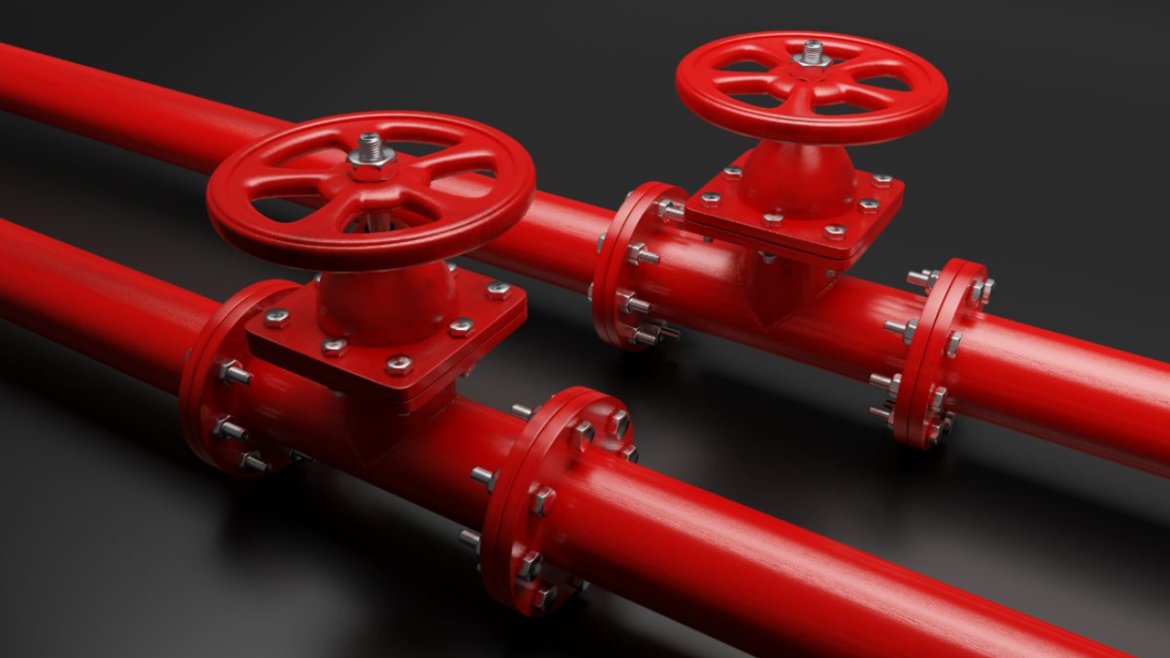In the realm of industrial safety, the foremost aim is to ensure the protection of individuals and assets from potential fire hazards. Fire incidents in industrial environments pose significant risks due to the presence of various combustible materials, equipment, and operations. To enhance protection against such hazards, it is crucial to establish a robust fire safety system. At the core of this system lies fire suppression piping. Fire piping is widely recognized for its stringent requirements. For instance, each pipe must undergo hydro-testing, and the manufacturer must possess UL listing and FM approval certifications. This article is about the importance of fire sprinkler pipes.
Fire Sprinkler Pipe
Fire protection pipe is a specialized type of pipe tailored for firefighting purposes, particularly for aboveground fire sprinkler systems. The pipe material is engineered to withstand high temperatures and pressures, making it well-suited for fire sprinkler installations. Companies like TUSPIPE are offering FM-approved fire sprinkler pipes. They undergo rigorous testing to ensure compliance with stringent safety standards. Consequently, it is commonly utilized in commercial and industrial structures where fire safety is paramount. Although FM-approved fire sprinkler pipe may entail a higher cost than standard fire sprinkler pipe, its enhanced safety and durability justify the investment for property owners.
Why is it important to use Fire Sprinkler Pipe?
The destructive impact of fire can be calamitous, yet there are preventive measures available to safeguard buildings and their inhabitants. One such measure involves the utilization of pipes. Although pipes may appear to be a mundane component of building design, they fulfill a pivotal role in shielding structures from fire. Below are some reasons why it is important to select the appropriate pipes:
- Pipes designed for firefighting are integral components of fire prevention systems, forming the foundational infrastructure. During fire emergencies, these conduits transport water or fire-extinguishing agents to affected areas. Establishing this network of pipes ensures efficient and rapid-fire suppression, reducing potential harm and protecting lives.
- Adherence to safety standards and regulations is mandatory for industrial establishments. Firefighting pipes are manufactured in line with industry norms, ensuring compliance with safety criteria for fire protection systems.
- Equipping industrial spaces with reliable fire prevention systems, including high-quality firefighting pipes, provides peace of mind. This reassurance is particularly valuable for business owners, facility managers, and employees, knowing that appropriate measures are in place to mitigate harm and protect lives in the event of a fire emergency.
Material to choose for Fire Sprinkler Pipes
Selecting a piping material that aligns with your property’s specific requirements and ensures reliable water delivery during emergencies is crucial for saving lives and preventing property damage.
- Copper emerges as an excellent choice for a wide array of commercial applications, boasting superior corrosion resistance despite its higher cost compared to steel.
- CPVC offers even greater corrosion resistance and comes at a lower cost than metallic options. However, it is only suitable for residential and light-hazard settings, with exceptions for ordinary hazard spaces within those settings.
Conclusion
At TUSPIPE, our manufacturing capabilities encompass the production of fire protection pipes adhering to the standards of UL certification, FM certification, ASTM A795 standard, ASTM A53 standard, and ASTM A135 standard for fire protection pipes. Now you know what should be your next stop to purchase fire protection pipes.

